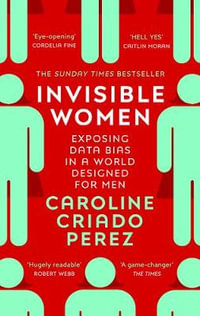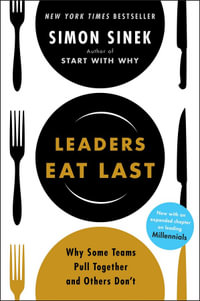Preface Acknowledgments For Instructors About the Author Chapter 1. Introduction Introduction Definitions History of Drugs, Addictions, and Addiction Counseling Labeling Theory Repeating Harmful Addictive Behaviors Treatment and "Maturing Out" Becoming a Certified Addiction Counselor Roles and Settings of Addiction Counselors Videos Individual Exercises Classroom Exercises Chapter Summary References Chapter 2. Ethical, Legal, and Professional Issues in Addiction Counseling General Discussion of Ethics (ACA's 2014 Code of Ethics) Six Ethical Principles Ethical Standards Specific Discussion of Ethical, Legal, and Professional Issues Cottone and Tarvydas's (2016) Discussion of Ethics in Addiction Counseling Working With the Legal System and Court-Referred Clients Special Considerations in Offering Couples, Marriage, and Family Counseling Resolving Ethical Issues Record-Keeping Standards Third-Party and Private Practice Reimbursement Counselor Recovery Status Resources and Videos Journals and Conferences Individual Exercises Classroom Exercises Chapter Summary References Appendix 2A. Confidentiality Agreement With Minors ("Assent") Appendix 2B. Initial Clinical Record Appendix 2C. Subsequent Clinical Records Chapter 3. Theories of Addiction Moral or "Choice" Model Biological and "Disease" Theories Psychological Theories Family or "Systems Theory" Models Sociocultural Theories Postmodern Theories Biopsychosocial Model Resources and Videos Journals and Conferences Individual Exercises Classroom Exercises Chapter Summary References Appendix 3A. Answers to Can You Guess Which Theory(ies) Explains the Counselor's Behavior? Appendix 3B. Public Attitudes About Addiction Survey Chapter 4. The Neuroscience of Addictions Neurogenetic and Genetic Studies Basics of Neuroscience The Body's Nervous System, Neurons, and Glial Cells Divisions and Structures of the Brain Neuroscience of Addictions Neurobiological Theories of Drug Dependence Developmental Concerns During Adolescence Behavioral Addictions Treatment Implications Emanating from Neuroscience Resources and Videos Journals and Conferences Individual Exercises Classroom Exercises Chapter Summary References PART I: GENERAL TREATMENT CONSIDERATIONS Chapter 5. DSM-5, Polyaddictions, and Comorbidity DSM-5 Polyaddictions Comorbidity Resources and Videos Journals and Conferences Individual Exercises Classroom Exercises Chapter Summary References Chapter 6. Individual Counseling and Relapse Prevention Evidence-Based Individual Counseling for Addictions Beginning Counseling Work With Clients How Effective Are Psychosocial Approaches in Addiction Treatment? What Is Evidence-Based Counseling? Cognitive-Behavioral Therapy and Behavior Therapy Motivational Interviewing and Motivational Enhancement Therapy Transtheoretical Model of Change Mindfulness Treatments Brief Interventions Integrative Therapy Solution-Focused Therapy Conducting a Mental Status Examination and Collecting Clients' Histories Assessment and Intervention Strategies for Suicide Risk and Prevention Assessment Strategies for Homicide Risk Impermanently Ending Our Counseling Relationship With Clients Relapse Prevention Common Counseling Mistakes Generic Addiction Apps Resources Individual Exercises Classroom Exercises Chapter Summary References Chapter 7. Couples, Family, Group, and Mutual Support Groups Couples Counseling Family Counseling Group Counseling Mutual Support Groups Resources and Videos Journals and Conferences Individual Exercises Classroom Exercises Chapter Summary References Appendix 7A. Conflict Resolution Appendix 7B. Changes Needed and Wanted in This Relationship Appendix 7C. Common Mistakes Made by Couples and Family Counselors Appendix 7D. Group Facilitation Roleplays Chapter 8. Prevention, Evaluation, and Assessment Prevention Universal Prevention Selective Prevention Indicated Prevention Mass Media Campaigns Behavioral Addiction Parental Strategies for Preventing Addiction Individual Strategies for Preventing Addiction Evaluation Program Evaluation Prevention Evaluation Treatment Evaluation Assessment Resources and Videos Journals and Conferences Individual Exercises Classroom Exercises Chapter Summary References PART II: SUBSTANCE ADDICTIONS Chapter 9. Alcohol Addiction Background Information Working With Diverse Populations Medications and Other Relevant Physical Interventions Specific Counseling Considerations Relevant Mutual Support Groups, Websites, and Videos Relevant Phone Apps Journals and Conferences Individual Exercises Classroom Exercises Chapter Summary References Chapter 10. Cannabis Addiction Background Information Working With Diverse Populations Medications and Other Relevant Physical Interventions Specific Counseling Considerations Relevant Mutual Support Groups, Websites, and Videos Relevant Phone Apps Journals and Conferences Individual Exercises Classroom Exercises Chapter Summary References Chapter 11. Opioid Addiction Background Information Working With Diverse Populations Medications and Other Relevant Physical Interventions Specific Counseling Considerations Relevant Mutual Support Groups, Websites, and Videos Relevant Phone Apps Journals and Conferences Individual Exercises Classroom Exercises Chapter Summary References Chapter 12. Nicotine Addiction Background Information Working With Diverse Populations Medications and Other Relevant Physical Interventions Specific Counseling Considerations Relevant Mutual Support Groups, Websites, and Videos Relevant Phone Apps Journals and Conferences Individual Exercises Classroom Exercises Chapter Summary References Chapter 13. Other Drug Addictions Background Information Working With Diverse Populations Medications and Other Relevant Physical Interventions Specific Counseling Considerations Relevant Mutual Support Groups, Websites, and Videos Relevant Phone Apps Journals and Conferences Individual Exercises Classroom Exercises Chapter Summary References PART III: RECOGNIZED BEHAVIORAL ADDICTIONS Chapter 14. Gambling Addiction Background Information Working With Diverse Populations Medications and Other Relevant Physical Interventions Specific Counseling Considerations Relevant Mutual Support Groups, Websites, and Videos Relevant Phone Apps Journals and Conferences Individual Exercises Classroom Exercises Chapter Summary References Chapter 15. Internet-Related Addictions: Internet Addiction, Internet Gaming Disorder, and Social Media Addiction Background Information Working With Diverse Populations Medications and Other Relevant Physical Interventions Specific Counseling Considerations Relevant Mutual Support Groups, Websites, and Videos Relevant Phone Apps Journals and Conferences Individual Exercises Classroom Exercises Chapter Summary References PART IV: CONTROVERSIAL BEHAVIORAL ADDICTIONS Chapter 16. Sex Addiction Background Information Working With Diverse Populations Medications and Other Relevant Physical Interventions Specific Counseling Considerations Relevant Mutual Support Groups, Websites, and Videos Relevant Phone Apps Journals and Conferences Individual Exercises Classroom Exercises Chapter Summary References Chapter 17. Romantic Relationship Addiction Background Information Working With Diverse Populations Medications and Other Relevant Physical Interventions Specific Counseling Considerations Relevant Mutual Support Groups, Websites, and Videos Relevant Phone Apps Journals and Conferences Individual Exercises Classroom Exercises Chapter Summary References Chapter 18. Food Addiction Background Information Working With Diverse Populations Medications and Other Relevant Physical Interventions Specific Counseling Considerations Relevant Mutual Support Groups, Websites, and Videos Relevant Phone Apps Journals and Conferences Individual Exercises Classroom Exercises Chapter Summary References Chapter 19. Exercise Addiction Background Information Working With Diverse Populations Medications and Other Relevant Physical Interventions Specific Counseling Considerations Relevant Mutual Support Groups, Websites, and Videos Relevant Phone Apps Journals and Conferences Individual Exercises Classroom Exercises Chapter Summary References Chapter 20. Shopping Addiction Background Information Working With Diverse Populations Medications and Other Relevant Physical Interventions Specific Counseling Considerations Relevant Mutual Support Groups, Websites, and Videos Relevant Phone Apps Journals and Conferences Individual Exercises Classroom Exercises Chapter Summary References Chapter 21. Work Addiction Background Information Working With Diverse Populations Medications and Other Relevant Physical Interventions Specific Counseling Considerations Relevant Mutual Support Groups, Websites, and Videos Relevant Phone Apps Journals and Conferences Individual Exercises Classroom Exercises Chapter Summary References PART V: SUMMARY AND CONCLUSIONS Chapter 22. Summary and Conclusions A Metaphor for Addictions Risk Factors Protective Factors Counseling Considerations What Counselors Bring to the Table References Epilogue Appendix A. CACREP Addiction Counseling Standards Appendix B. Generic Preparation and Action Strategies Appendix C. Relapse Prevention Handouts for Clients Appendix D. Mental Status Examination Index
























